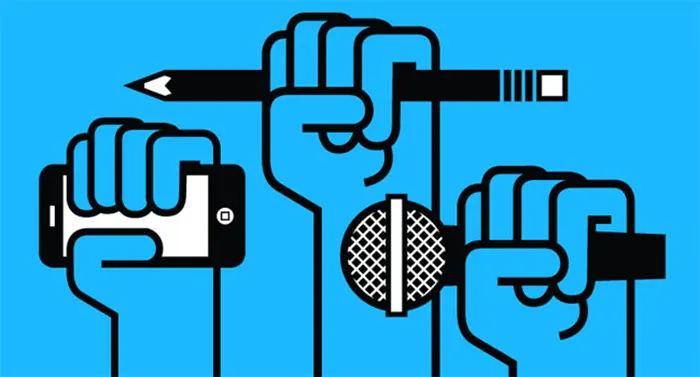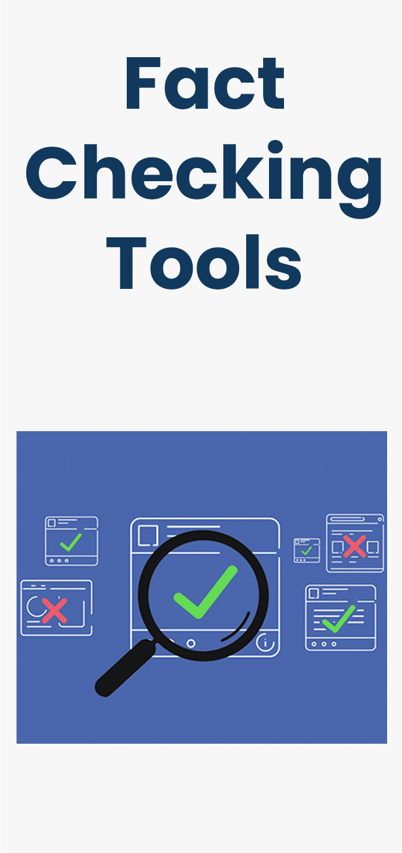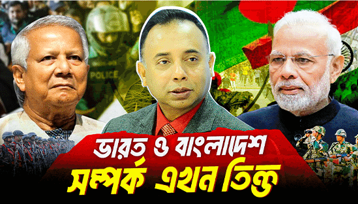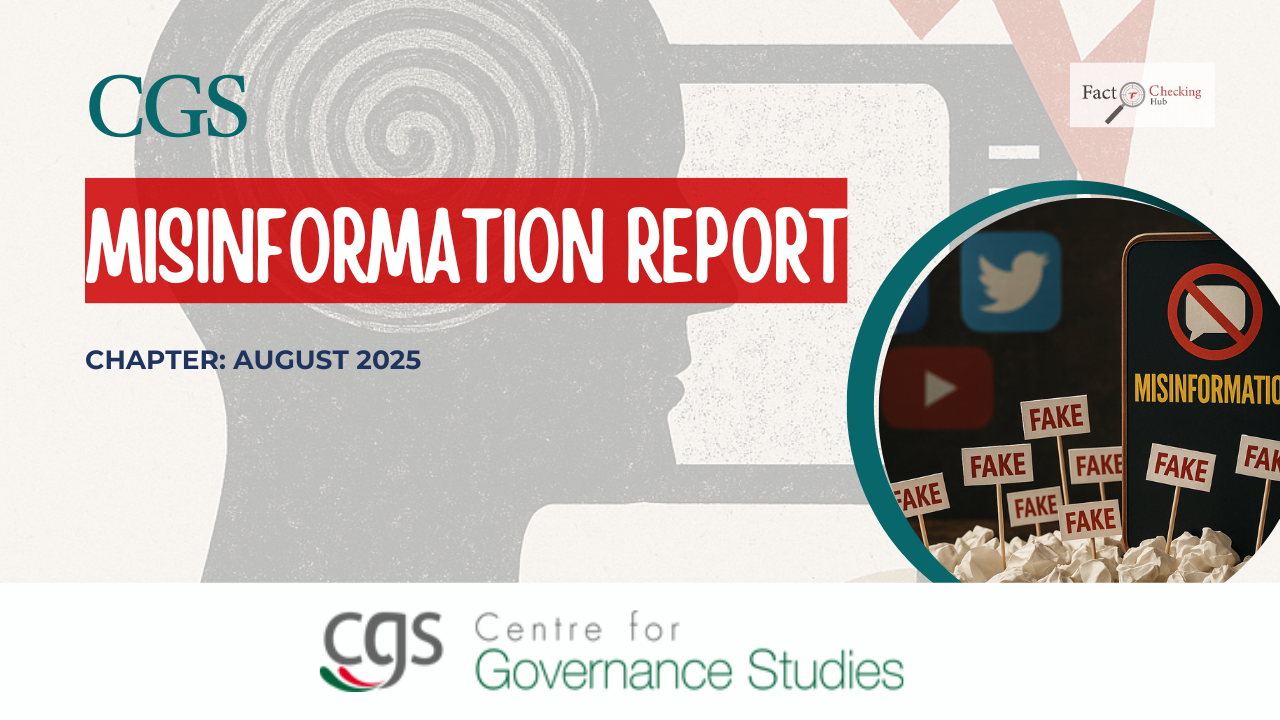
The evaluation of misinformation trends for August 2025 presents a comprehensive picture of a highly politicized and digitally mediated information environment. With a total of 340 documented cases, this period underscores the extent to which misinformation has infiltrated public discourse, particularly in the political realm, with 268 cases (78.8%). In contrast, political figures were targetedin 96 (28.24%) cases. This overwhelming dominance highlights a sustained and strategic use of misinformation as a tool for political manipulation. Social media emerged as the predominant channel of dissemination, being the source in 331 out of 340 cases (97.35%). The findings emphasize not just the scale of the misinformation problem but also its systemic and intentional nature, particularly within politically sensitive contexts. The convergence of misinformation production, algorithmic distribution, and emotionally charged narratives necessitates urgent multi-stakeholder intervention, including regulatory oversight, digital literacy programs, and platform accountability measures.
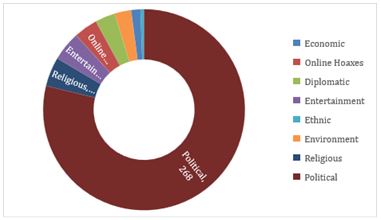 This alarming trend is being monitored by the Centre for Governance Studies (CGS). Since November, CGS has been regularly publishing monthly statistical analyses on misinformation in Bangladesh. The organization tracks and identifies false information from eight prominent active fact-checking organizations in the country: Fact Watch, Rumor Scanner, AjkerPatrika, AFP Fact Check (Bangla), Dismislab, NewsChecker, Fact Crescendo, and Boom BD. CGS conducts daily monitoring of these platforms to compile and verify cases of misinformation. All tracked and verified misinformation data are available to the public through the dedicated platform: https://factcheckinghub.com/.
This alarming trend is being monitored by the Centre for Governance Studies (CGS). Since November, CGS has been regularly publishing monthly statistical analyses on misinformation in Bangladesh. The organization tracks and identifies false information from eight prominent active fact-checking organizations in the country: Fact Watch, Rumor Scanner, AjkerPatrika, AFP Fact Check (Bangla), Dismislab, NewsChecker, Fact Crescendo, and Boom BD. CGS conducts daily monitoring of these platforms to compile and verify cases of misinformation. All tracked and verified misinformation data are available to the public through the dedicated platform: https://factcheckinghub.com/.
The month of August 2025 has offered a revealing snapshot into the complex and often dangerous world of misinformation. The misinformation landscape remains overwhelmingly dominated by politically oriented misinformation, a pattern that continues from previous months and seems to be intensifying. With 268 cases out of the total 340 attributed to political themes, it is evident that false information is increasingly being used as a strategic tool to shape, distort, or disrupt political narratives. This concentration suggests a targeted campaign designed to undermine political processes, attack political opponents, and influence public opinion ahead of key events such as elections. Other categories, while significantly smaller, are not to be dismissed. Entertainment and religious misinformation each accounted for 16 cases, while online hoaxes (13), diplomatic incidents (11), environmental concerns (9), economic narratives (5), and ethnic issues (2) also featured, albeit with lower frequency. These secondary categories indicate a broader diversification in the themes of misinformation, pointing to a trend where any topic with emotional resonance or ideological friction can be weaponized.
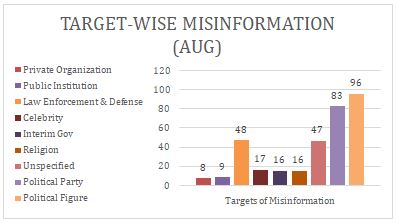 While misinformation categories provide insight into the thematic intent of such content, understanding who is being targeted is equally important. A closer analysis of the targets reveals a coordinated effort to destabilize public trust in political leadership and governance structures. The data shows that political figures were the most frequently targeted group, with 96 documented instances (28.24%). Political parties were also heavily affected, with 83 cases. Law enforcement and defense sectors were not far behind, experiencing 48 attacks, further supporting the idea that misinformation is being used to chip away at the legitimacy of societal structures that uphold law, order, and governance. Additionally, 47 cases targeted unspecified or ambiguous entities, often creating a generalized atmosphere of mistrust without clearly identifying a culprit or victim, often to create panic among citizens. Targets such as celebrities (17), religion (16), and the interim government (16), public institutions (9), and private organizations (8)reveals an opportunistic exploitation of high-profile personas that often lack the robust protections or institutional gravitas to withstand coordinated misinformation campaigns.
While misinformation categories provide insight into the thematic intent of such content, understanding who is being targeted is equally important. A closer analysis of the targets reveals a coordinated effort to destabilize public trust in political leadership and governance structures. The data shows that political figures were the most frequently targeted group, with 96 documented instances (28.24%). Political parties were also heavily affected, with 83 cases. Law enforcement and defense sectors were not far behind, experiencing 48 attacks, further supporting the idea that misinformation is being used to chip away at the legitimacy of societal structures that uphold law, order, and governance. Additionally, 47 cases targeted unspecified or ambiguous entities, often creating a generalized atmosphere of mistrust without clearly identifying a culprit or victim, often to create panic among citizens. Targets such as celebrities (17), religion (16), and the interim government (16), public institutions (9), and private organizations (8)reveals an opportunistic exploitation of high-profile personas that often lack the robust protections or institutional gravitas to withstand coordinated misinformation campaigns.
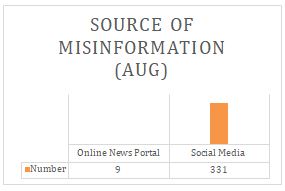 Equally critical to this analysis is the identification of sources. Social media has emerged as the primary engine of misinformation dissemination. Of the 340 documented cases, a staggering 331 (97.35%) were traced back to social media platforms. The sheer volume of misinformation originating from these platforms reflects the challenges inherent in moderating content in real time, especially given the virality and algorithm-driven engagement that social media facilitates. Platforms prioritize content that garners reactions, and misinformation—particularly when sensational, polarizing, or fear-inducing—often thrives in such environments. The decentralized nature of content creation and the speed of its spread make early detection and correction incredibly difficult. With millions of users sharing, resharing, and commenting on content daily, even a single false claim can reach thousands, if not millions, before any corrective measure is implemented.
Equally critical to this analysis is the identification of sources. Social media has emerged as the primary engine of misinformation dissemination. Of the 340 documented cases, a staggering 331 (97.35%) were traced back to social media platforms. The sheer volume of misinformation originating from these platforms reflects the challenges inherent in moderating content in real time, especially given the virality and algorithm-driven engagement that social media facilitates. Platforms prioritize content that garners reactions, and misinformation—particularly when sensational, polarizing, or fear-inducing—often thrives in such environments. The decentralized nature of content creation and the speed of its spread make early detection and correction incredibly difficult. With millions of users sharing, resharing, and commenting on content daily, even a single false claim can reach thousands, if not millions, before any corrective measure is implemented.
In stark contrast, only 9 cases were linked to online news portals, underscoring the comparatively minimal role of traditional or semi-traditional digital media in spreading false information. Unlike news portals, social media allows for real-time content sharing without the buffer of editorial oversight or professional fact-checking, making it especially vulnerable to manipulation.
What this data reveals is a coordinated, multidimensional assault on truth. The fact that multiple societal sectors—including religion, entertainment, diplomacy, and even the environment—are being targeted illustrates that misinformation is evolving in complexity and reach. It is no longer just a political issue but a societal one. The weaponization of information is being used not just to influence elections or discredit leaders but to fracture social cohesion, exacerbate tensions, and dilute the very concept of objective truth. In doing so, misinformation acts as a slow poison to democratic deliberation, transforming debates into confrontations and eroding the foundations of informed citizenship.
A democratic society relies on a shared set of facts upon which debates and decisions can be grounded. Misinformation disrupts this consensus, creating fragmented realities in which different segments of the population operate under entirely separate understandings of truth. When amplified by social media, these fragments harden into echo chambers, where contradictory information is not only ignored but actively rejected. This erosion of a shared informational foundation is perhaps the most insidious consequence of the misinformation epidemic.
In conclusion, the misinformation landscape in August 2025 reveals a deeply entrenched and sophisticated challenge to public discourse and institutional trust. With political misinformation at its core and social media as its chief delivery system, the scope and impact of these false narratives are growing both in scale and influence. The concentration of misinformation against political figures, parties, and law enforcement points to a deliberate effort to destabilize the pillars of democratic society. Addressing this requires a multi-pronged strategy—one that includes regulatory reform, media literacy education, platform accountability, and greater public engagement in the verification of information. Only through such collective effort can we hope to preserve the integrity of discourse and ensure that democratic decision-making is grounded in fact rather than fiction.

